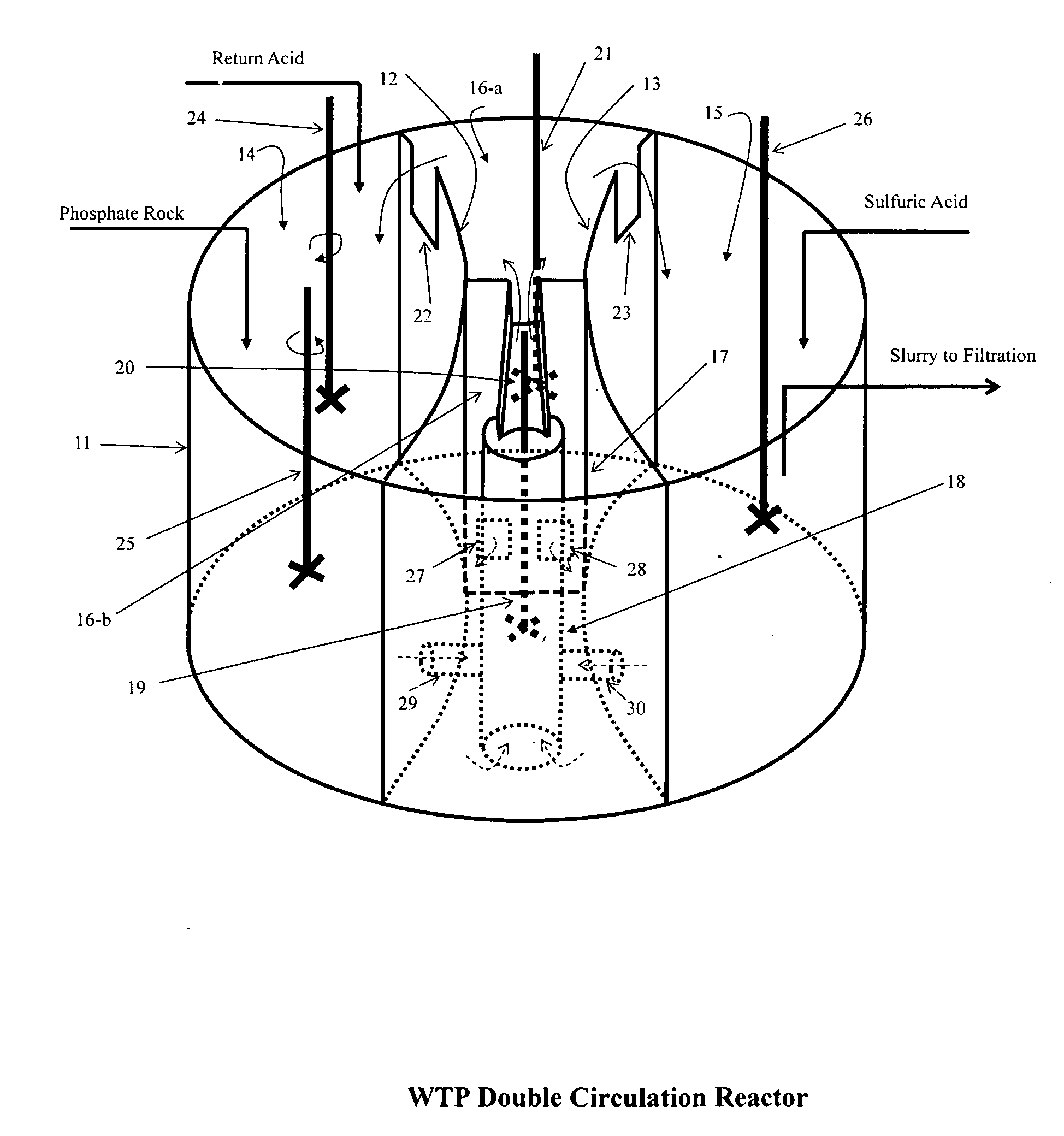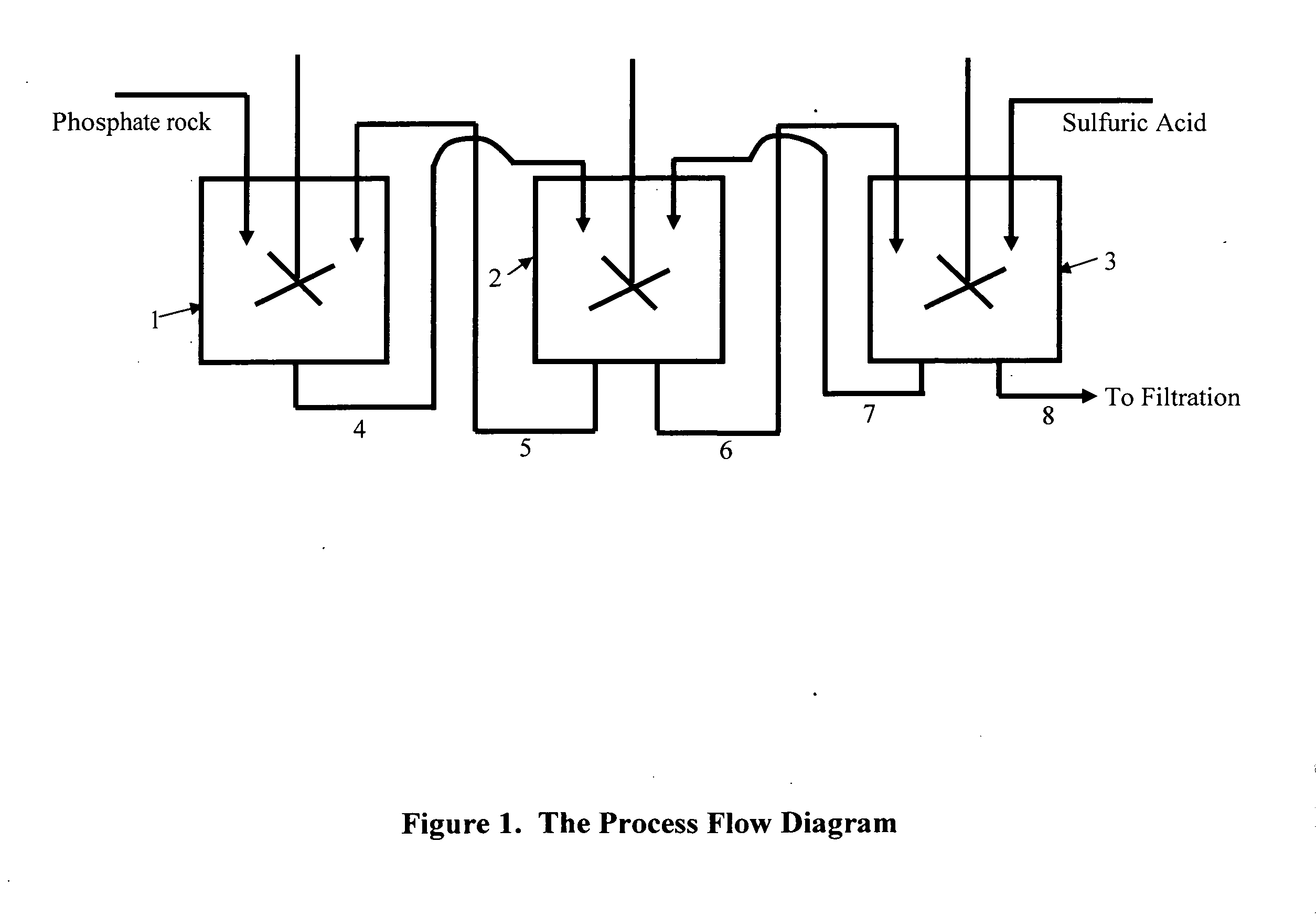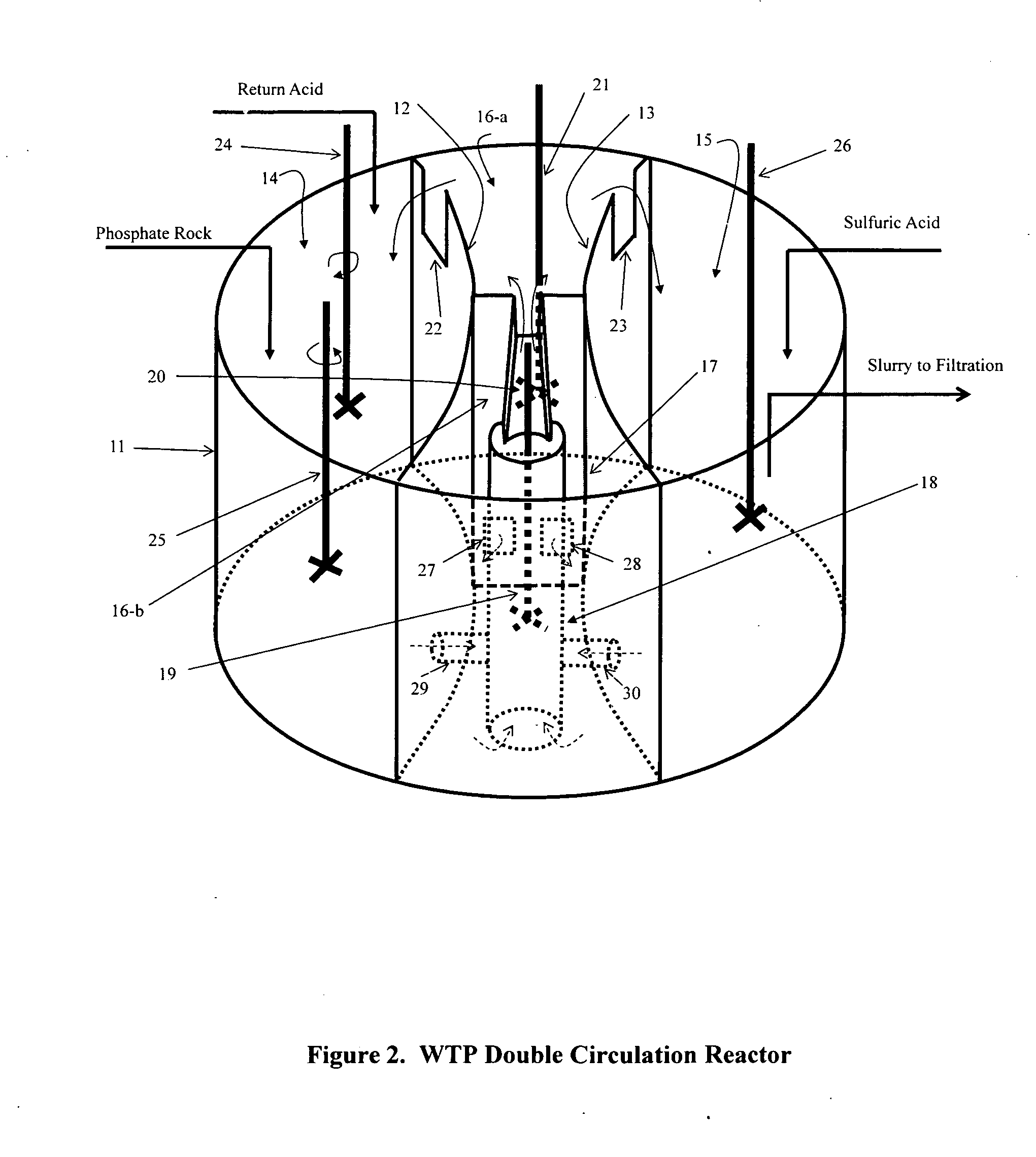Process for Producing Products Under Very Low Supersaturation
a technology of supersaturation and supersaturation rate, applied in the direction of phosphorus oxyacids, rotary stirring mixers, transportation and packaging, etc., can solve the problems of high p2o5 loss, impose potentially dangerous environmental hazards, and high cost of pile site construction and maintenance, so as to reduce p2o5 loss, reduce p2o5 loss, and improve the filterability of gypsum crystals
- Summary
- Abstract
- Description
- Claims
- Application Information
AI Technical Summary
Benefits of technology
Problems solved by technology
Method used
Image
Examples
Embodiment Construction
[0017]The key differences of the present invention from all the previous efforts and practices are:[0018](1) the usage of gypsum slurry that has roughly stoichiometrically balanced calcium and sulfate ions in the solution and is also at considerably low supersaturation to digest the phosphate ore, to disperse the sulfuric acid, and to minimize the gypsum supersaturation level through its recirculation back to where both the slurries are mixed (or through introducing both streams of the calcium containing and sulfate containing slurries into a compartment that renders a preferred average residence time of more than 20 minutes if a reactor different from the preferred embodiment described in the present invention). It should be realized that reduction of supersaturation has long been recognized to be the key factor in improving the “wet process” phosphoric acid production efficiencies. The recirculation of product slurry is considered the fundamental success for this industry. Many ot...
PUM
| Property | Measurement | Unit |
|---|---|---|
| temperature | aaaaa | aaaaa |
| temperatures | aaaaa | aaaaa |
| equivalent diameter | aaaaa | aaaaa |
Abstract
Description
Claims
Application Information
 Login to View More
Login to View More - R&D
- Intellectual Property
- Life Sciences
- Materials
- Tech Scout
- Unparalleled Data Quality
- Higher Quality Content
- 60% Fewer Hallucinations
Browse by: Latest US Patents, China's latest patents, Technical Efficacy Thesaurus, Application Domain, Technology Topic, Popular Technical Reports.
© 2025 PatSnap. All rights reserved.Legal|Privacy policy|Modern Slavery Act Transparency Statement|Sitemap|About US| Contact US: help@patsnap.com



